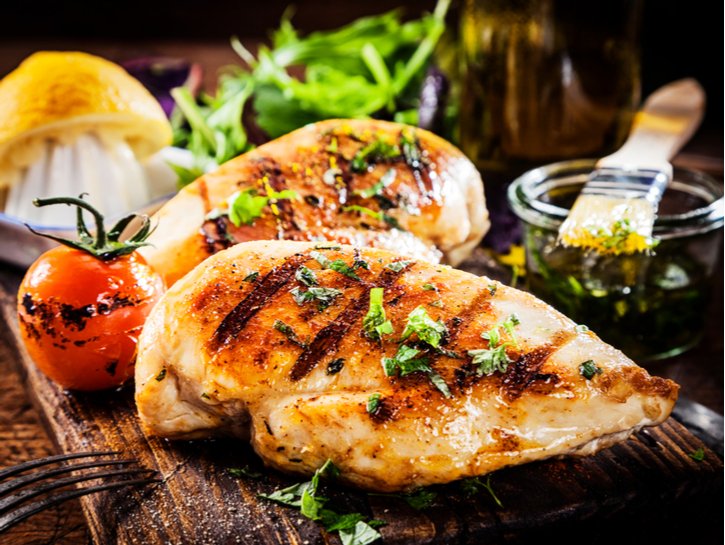Do you find it hard to keep your chicken from drying out when you cook it? And no matter what you do and no matter how juicy you try to get it, you can’t seem to make the meat retain its moisture?
It turns out that your meat coming out dry has nothing to do with whether or not you cook the chicken breast in liquid. In fact, it has everything to do with the temperature at which the meat is prepared. When extreme heat comes into contact with proteins, such as chicken, the proteins contract and expels the moisture. And because water transfers heat more effectively than air, adding water to your cooking chicken will only make it hotter and more prone to drying out, not keep it more moist.
To avoid a dried-out meal reminiscent of the Christmas Vacation turkey, try some of these preparation methods:
Sear The Skin
Instead of putting the chicken breast directly into the oven, throw it on the stovetop first. The skin will be extra crisp and tasty, and the meat inside will retain its juices more than it would by baking alone. The chicken breast’s skin works to contain the juices, so reinforcing the crispness of the skin helps the chicken be more moist. Here’s the method:
1. Preheat the oven to 400 degrees Fahrenheit
2. Douse a skillet with olive oil over medium to high heat
3. As the oil heats, coat the chicken breasts in salt and pepper
4. Place the chicken breasts into the skillet. Make sure not to move them around because the crust is forming
5. Add your desired herbs and garlic to the chicken as the crust forms
6. Once the crust reaches a golden color, turn it over and cook the other side until it looks the same
7. Place in the preheated oven for eight minutes or until the juice runs clear
Be Mindful Of The Internal Temperature
Break out that meat thermometer — to avoid overcooking and drying out your chicken breast, the internal temperature at the thickest part of the meat should be the FDA-approved 165 degrees. This eliminates any risk of Salmonella while also stopping the chicken breast from losing its moisture. If you finish cooking your chicken and the internal temperature reads 160 degrees, it will rise the extra 5 degrees if you allow it to sit.
Let It Rest
Once you’re finished cooking the chicken, let it rest in aluminum foil for at least five minutes before you cut into it and serve. By letting the chicken breast sit after cooking, you’re allowing the juices to spread throughout the meat. This will make the chicken moister, as the juices won’t flow out of the meat and onto the cutting board once you cut into it.
Cockaigne
This method is from the 1967 book Joy of Cooking and makes it nearly impossible to overcook your chicken breast. The practice, dubbed Cockaigne, is similar to poaching — the chicken is simmered on a stovetop and placed in a covered pan, where the condensation produced keeps the chicken breast extra moist.
Here’s what you do:
1. Put two tablespoons of butter and two tablespoons of oil in a skillet over medium heat
2. While the skillet is heating, coat the chicken breasts with flour
3. Place the chicken in the pan, cover and cook for about 15 minutes. Make sure to occasionally move and turn over the chicken so it doesn’t brown
4. Leaving the skillet covered, remove it from the heat and let it sit for 10 minutes
Dry-Poaching
Don’t let the name of this technique intimidate you — it’s actually incredibly easy to dry poach. After you season the chicken breast, wrap each piece with parchment paper before placing it into the oven to bake. The parchment paper acts as the chicken’s skin and works to retain moisture and prevent the chicken from drying out.

Put It In Milk
It might sound strange, but roasting chicken breast in milk might be the secret to achieving the perfect, juicy meat. Whereas boiling water encourages the chicken to contract and expel its moisture, milk is not as strong of a heat conductor and therefore won’t prompt the protein to contract and dry out. One recipe, Jamie Oliver’s Chicken in Milk, is world famous for making a delicious, tender meal.
Turn To A Darker Meat
If all else fails and your chicken breast still comes out dry and flavorless, try substituting the breast for thighs. Unlike chicken breasts, thighs have a tendency to be juicy and moist no matter how you cook them.
